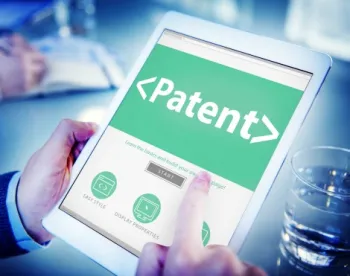The U.S. Patent and Trademark Office (USPTO) has launched a new Automated Interview Request (AIR) Form that allows practitioners to submit an online request for an interview with an examiner. The online form allows applicants to request an interview at any time without calling the examiner over the phone and leaving a message, which is a common practice now. The form also is intended to be used instead of the older Applicant Initiated Interview Request Form, which is a separate form and is no longer recommended by the USPTO.
The AIR program allows applicants to request interviews with examiners quickly and easily, no matter where an examiner is located or what hours he or she works. This new approach to interview requests is part of a larger push by the USPTO to encourage more interviews and more contact between examiners and applicants. By making an interview request as easy as performing a few clicks, the USPTO hopes to lower the barrier to interviews. To use the form, an applicant must provide standard information about the person submitting the form and the application itself; agree to communicate via the internet; and propose a date, time, and type of interview (in-person or telephonic).
The program has several advantages over calling an examiner to schedule an interview, especially during an initial interaction between an examiner and an applicant on a new application. First, the request for an interview is immediately entered on the record. When an AIR form is submitted, an email with all of the relevant information is sent to the examiner, who is then expected to contact the applicant within 2 business days. If an examiner is unresponsive to the interview request, the applicant has clear documentation about when the request was submitted because the request is automatically entered on the record. For the examiner, the form is also helpful because the examiner will be emailed all of the pertinent information for the application when the request is made, so responding to the interview request is easier. This feature is a noticeable improvement over the former Applicant Initiated Interview Request Form, which was often entered on the record without notifying the examiner that an interview request had been made.
When the AIR form is submitted, the interview request is also entered into a dashboard monitoring system for the examiner’s supervisor. Supervisors generally do not follow up on interview requests with their examiners unless the request was made more than 30 days previously and no action has been taken, but the system provides supervisors an easy way to identify relevant information if an applicant is frustrated by an unresponsive examiner. Examiners are also evaluated by their supervisors on their customer service, so repeated unresponsiveness by an examiner that is also documented can affect their performance evaluations.
Finally the AIR form allows an applicant to authorize internet communication regarding the relevant application. If an applicant wants to use email to communicate with the examiner or use a WebEx during the interview, this authorization is required. Being able to authorize internet communication easily on the AIR form thus allows an applicant to provide required authorization quickly without having to submit a separate form or ask an examiner to allow oral authorization of communicating via the internet, which some examiners will not allow.
The AIR program can thus simplify the interview process for both examiners and applicants, especially when first working together on an application. While further communication with an examiner may be simplest through phone calls, making an initial request using the AIR Form can provide easy authorizations and allow prompt responses from examiners, allowing applicants and examiners to work together to produce higher quality patents.





 />i
/>i

